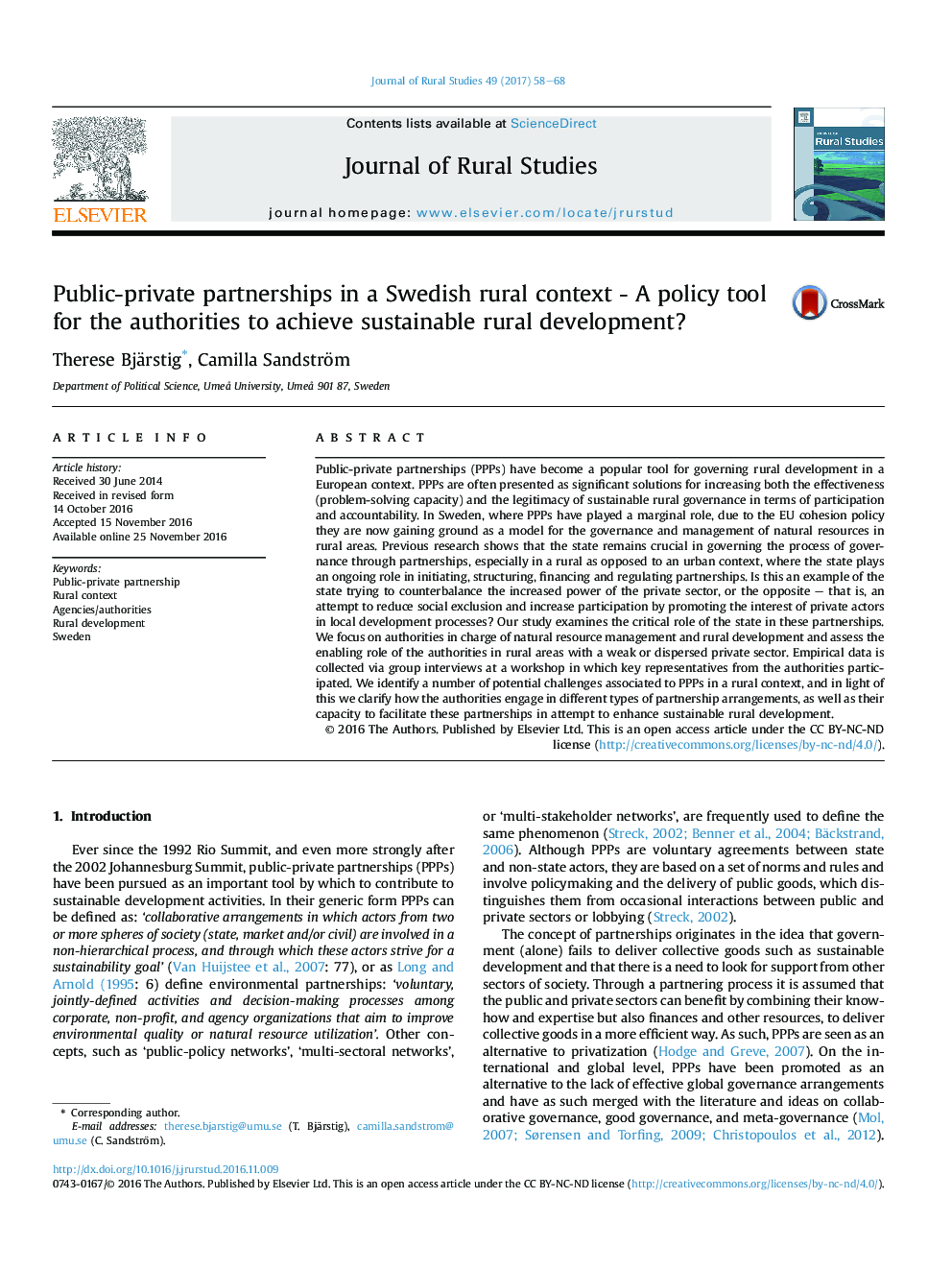| Article ID | Journal | Published Year | Pages | File Type |
|---|---|---|---|---|
| 6460302 | Journal of Rural Studies | 2017 | 11 Pages |
â¢Authorities have an enabling role in rural areas with a weak or dispersed private sector.â¢PPPs that have clearly defined tasks and partner representation works 'better'.â¢Two types of PPPs are identified - PPPs for management and PPPs for development.â¢The two types of PPPs are seldom integrated even if they should.â¢Lack of policy integration hamper implementation of a sustainable rural development policy.
Public-private partnerships (PPPs) have become a popular tool for governing rural development in a European context. PPPs are often presented as significant solutions for increasing both the effectiveness (problem-solving capacity) and the legitimacy of sustainable rural governance in terms of participation and accountability. In Sweden, where PPPs have played a marginal role, due to the EU cohesion policy they are now gaining ground as a model for the governance and management of natural resources in rural areas. Previous research shows that the state remains crucial in governing the process of governance through partnerships, especially in a rural as opposed to an urban context, where the state plays an ongoing role in initiating, structuring, financing and regulating partnerships. Is this an example of the state trying to counterbalance the increased power of the private sector, or the opposite - that is, an attempt to reduce social exclusion and increase participation by promoting the interest of private actors in local development processes? Our study examines the critical role of the state in these partnerships. We focus on authorities in charge of natural resource management and rural development and assess the enabling role of the authorities in rural areas with a weak or dispersed private sector. Empirical data is collected via group interviews at a workshop in which key representatives from the authorities participated. We identify a number of potential challenges associated to PPPs in a rural context, and in light of this we clarify how the authorities engage in different types of partnership arrangements, as well as their capacity to facilitate these partnerships in attempt to enhance sustainable rural development.
